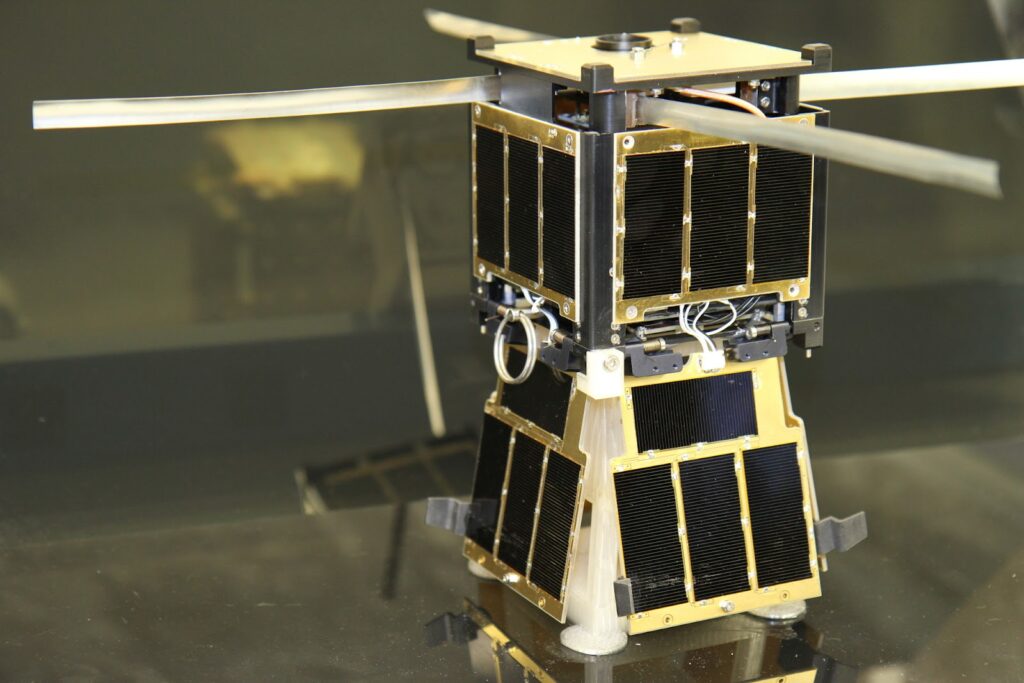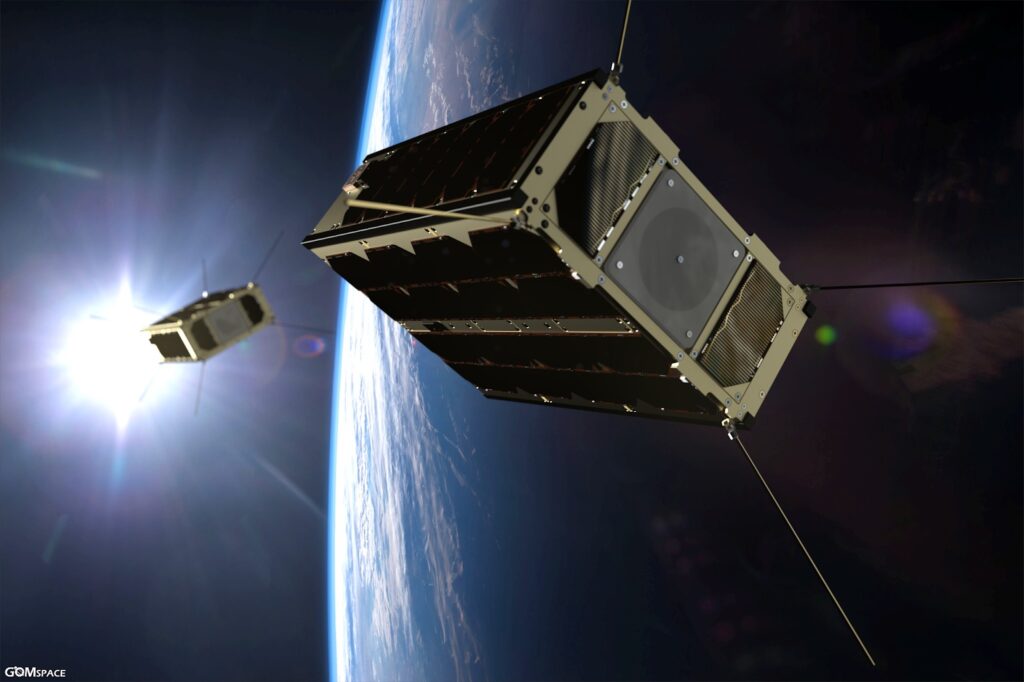CubeSats, often referred to as nanosatellites, started as low-cost tech primarily used for educational research missions. Still, CubeSats gained massive popularity exactly because of their affordable cost and scalable, universal design. Today, CubeSat capabilities are way wider than they used to be at the technology’s origin, and even though there are still certain limitations, modern CubeSat components have gone a long way and can now accomplish very advanced tasks. So, what is the basic working principle of CubeSat? And which tasks can it perform? Below, we answer that and discuss which CubeSats components are must-haves for operation in orbit.
CubeSat design specification explained
The first thing to understand about CubeSats is that they are made of scalable cube-like units, which pretty much explains their name. Each unit measures 10 cm × 10 cm × 10 cm and weighs up to 1.33 kg. Larger CubeSats configurations may scale up to 16 Units, yet each structural component, aka unit, will still have the same basic dimensions.
Such design uniformity is, in part, a necessary measure. CubeSats are generally carried to their orbital destinations as a secondary payload, the so-called piggyback to the primary satellite load. Unlike their ‘big brothers’ carried in special capsules to be later deployed over carefully designed rocket separation wings, CubeSats travel in special dispensers, aka deployment pods. Most launchers have strict specifications as to the size of those secondary deployment pods, which also restricts CubeSat dimensions.
But there is an upside to everything; this uniform size allows manufacturers to create equally uniform CubeSat components, which once again, reduces their costs thanks to fine-tuned production. Since there is no need for custom designs or dimensions, it’s possible to build a uniform production line that reduces manufacturing time, as well as cost. But what are the basic components of satellites in detail? Let’s find out!
What are CubeSats components?

CubeSat components list can vary depending on the spacecraft’s purpose (i.e., earth observation vs technology demonstration), but there are a few parts every satellite needs to work. Here are the must-have components for any satellite, CubeSat included:
● Structure: The structural frame, one of the key CubeSat components functions as support and protection for all other internal components. It is usually built of lightweight but durable materials, such as aluminium or different metal composites.
● Electrical Power System (EPS): responsible for generating, storing, and distributing electrical power to all other CubeSat components. Solar panels are most often used for power supply in space because, unlike batteries, they have an almost unlimited supply of ‘free’ electricity from our parent star. But batteries are also essential for missions out of direct sunlight, so most CubeSat power components run on a combination of both.
● On-Board Computer (OBC): OBC runs the spacecraft software, executes commands received from the ground station, and manages communication with other CubeSat components. It ensures a CubeSat ‘stays in touch’ with our planet and can receive new commands when necessary.
● Communication System: even though CubeSats rely on software components to receive commands, it’s the communication system that allows spacecraft to receive and transmit all data. This major component typically includes antennas, transceivers, and modems.
● Attitude Determination and Control System (ADCS): this crucial component determines and controls CubeSat orientation in space. It normally includes magnetometers, gyroscopes, and sun sensors; and less commonly — actuators like reaction wheels. ADCS component is necessary for pointing instruments and antennas in the right direction — both for communication with the ground and completing mission objectives (if a CubeSat was deployed to collect data, which is often the case).
● Thermal Control System: since space is an extremely cold environment, spacecraft relies on a thermal control system to regulate the temperature of all CubeSat components and ensure their proper operation. Usually, thermal controls include thermal coatings and radiators, but for some missions, more ‘active’ measures are necessary, so CubeSats may also be equipped with heaters and thermostats.
● Payload: payload is a mission-specific component, which can include anything, from scientific instruments and remote sensing cameras to technology demonstration devices. This component depends on CubeSat mission objectives, such as Earth observation, space weather monitoring, or testing new technology, i.e., new orbital manoeuvres as NASA did with its Pathfinder mission.
● Propulsion System: this component is not a must-have for CubeSats, but some spacecraft can perform orbit adjustments and manoeuvres using built-in propulsion. The actual propulsion system can be based on various technologies, including chemical thrusters, electric propulsion, or cold gas thrusters. However, equipping a cost-effective CubeSat with an advanced propulsion system depends on mission requirements and is usually available for more well-funded programs.
These CubeSat components, with a single exception of propulsion that remains a pricey ‘add-on,’ are installed on all CubeSats currently orbiting our planet. Today, most of them operate in low-earth orbit, but major space agencies, including ESA and NASA, already consider using these CubeSats for ‘larger’ missions. But even now, CubeSat capabilities are very impressive as they already include scientific research, Earth and climate change monitoring, demonstrating new technology, and much more — with even more to come soon.

